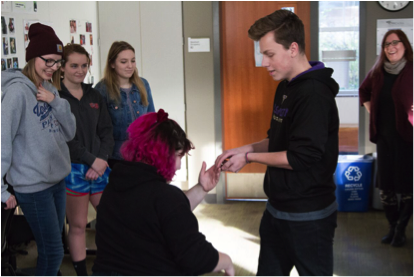This series of blogs features guest student author Devon G on his recycled art project, featured in Mobius Gallery in Spring of 2023. Join us here for this final article in the series of thoughts and considerations on art, community, and society, and how they impact and are affected by sustainable practices – through non-recyclable plastics!
With confusion around plastic recycling, another motivation for my capstone project was aiming to find a temporary solution for plastics that are typically not accepted at recycling plants. Plastics with Nos. 3-7 on the bottom are less likely to be taken at recycling facilities throughout the United States. If these plastics are not accepted and end up in a recycling bin, they get sent to landfills. This is also similar for a lot of PLA’s – plant-based plastics – and plastics that are too small to be recovered in the sorting process [1]. These plastics that make into our landfills, oceans, rivers, and so forth, and pose a threat to our environment, animals, and us. These plastics pollute our waterways, get mistaken as food by animals, break down into microplastics (which poses threats we have yet to fully uncover), and so on [1].
By using plastics that are generally not recycled, in the creation of art pieces, people can find a temporary solution for keeping non-recyclable plastics out of our waterways and oceans. More education on what plastics are accepted in an individual’s county/processing service are needed, but this is a fun way to encourage people to learn about their local recycling inputs, while also making art and contributing to less harmful waste in our waters. Eventually, it is possible for this art to take off, with styles emerging, and plastics becoming recognized for their art potential, resulting in less plastic polluting our water. This would be a temporary solution until plastic recycling is advanced, and or different packaging materials become the norm, or we find more ways in daily life to use less single-use plastics. While I recognize this is idealistic, I do believe there is potential showing this message by making art with current-day, non-recyclable plastics. Read the next blog in this series to consider more about reducing consumption and use of single use plastics!

Citations:
- Frost, K., & Goodman, A. (2023, March 29). The inconvenient consequences of a culture of convenience. ASU News. https://news.asu.edu/20181003-solutions-asu-researchers-plastics-pollution-recycling

















